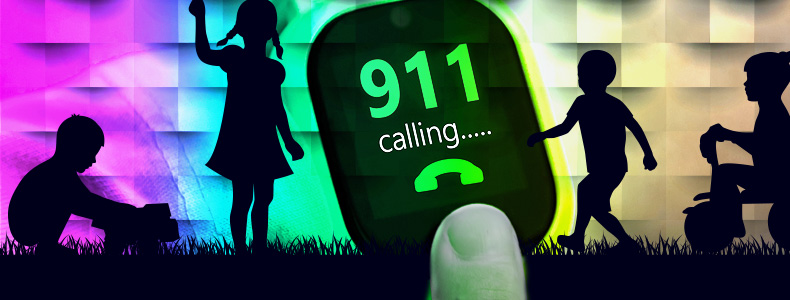Many parents find it difficult to teach children – especially young children – what an emergency is and when they should seek help. This can become especially challenging when attempting to teach them when they need to seek emergency help, such as calling 911. Kids should learn that when there is an emergency and no adults are around, they should seek help. But how do you teach them what to do and when in an emergency? We will explore more in this article.
Defining an emergency
For some kids, it can be difficult to determine what is and isn’t an emergency. It may be helpful to teach kids the difference between something being dangerous, such as cleaning supplies left unattended, and someone being hurt, such as if a sibling were to ingest those cleaning supplies. They also should know how to identify the potential for someone to be hurt, such as when there is a fire in the home.
It may be helpful to teach children examples of a 911 emergency. Some examples include:
- When there is a fire or a lot of smoke, even if they can’t see flames
- Someone is passed out and they can’t wake that person up after doing things like shaking them or calling their name loudly
- They see a crime happening, like someone breaking into a home or stealing something
- They are told directly by an older child or adult to call 911
These are just a few examples of emergencies that you may want to share with your children but be conscious of other emergencies they may face.1
Finding help during an emergency
It’s especially important for children (particularly those that are younger) to be able to tell what types of adults are considered emergency personnel. Teach them to identify who likely may be a police officer, firefighter, paramedic, doctor or nurse based on their clothing, vehicle, or badges.
While emphasizing the concept of “Stranger Danger,” it’s also important to let them know that it’s okay to turn to an adult if they feel there is an emergency and need help but are unsure if they are emergency personnel. Teach them to seek out a neighbor or other trusted, nearby individual in the event a parent is unconscious or away and they believe they need help.1
If your child feels nervous about calling 911 in an emergency, help them feel more comfortable by telling them that many emergency response operators are trained to talk with children as well as adults. It may help reduce their nervousness by letting them know what types of questions they may be asked by a 911 operator.1 Some examples include:
- - What’s your emergency?
- - Where do you live?
- - Who needs help?
- - Are you alone or is someone with you?
To help them prepare to answer these questions in an emergency situation, consider role-playing with the child where they have to recite their address, tell you what their parent’s name is, and what scenarios would require them seeking emergency help. Ask them questions such as, “What would you do if you saw a ton of smoke and I wasn’t around?” Or, “What should you do if I fall down and you can’t wake me up?” Walk them through the scenarios so they know how to respond in each case.1
Calling 911 is serious business
Make sure that your kids know that calling 911 is a serious matter, and not something to do for fun or as a prank. They should know there are serious consequences for those who call emergency services on purpose without there being an actual emergency. Make sure to contact 911 only when they think they or someone near them is in danger.
Some final tips:
- Make sure your child memorizes their address and phone number, as well as the names of their caregivers.
- Have a list of emergency numbers handy, including the number for 911 and a trusted, known emergency contact for your family.
- Make sure they know the number for emergency services is 9-1-1, rather than 9-11 or some other combination.
Teaching your child when to seek help in an emergency isn’t an easy task. Help them to identify what is an emergency and what’s not, who to trust for help, and how to contact the right people in an emergency to get help.
Categories: Child Safety Ages 4-11, Home Safety/Childproofing, Safety Tips
